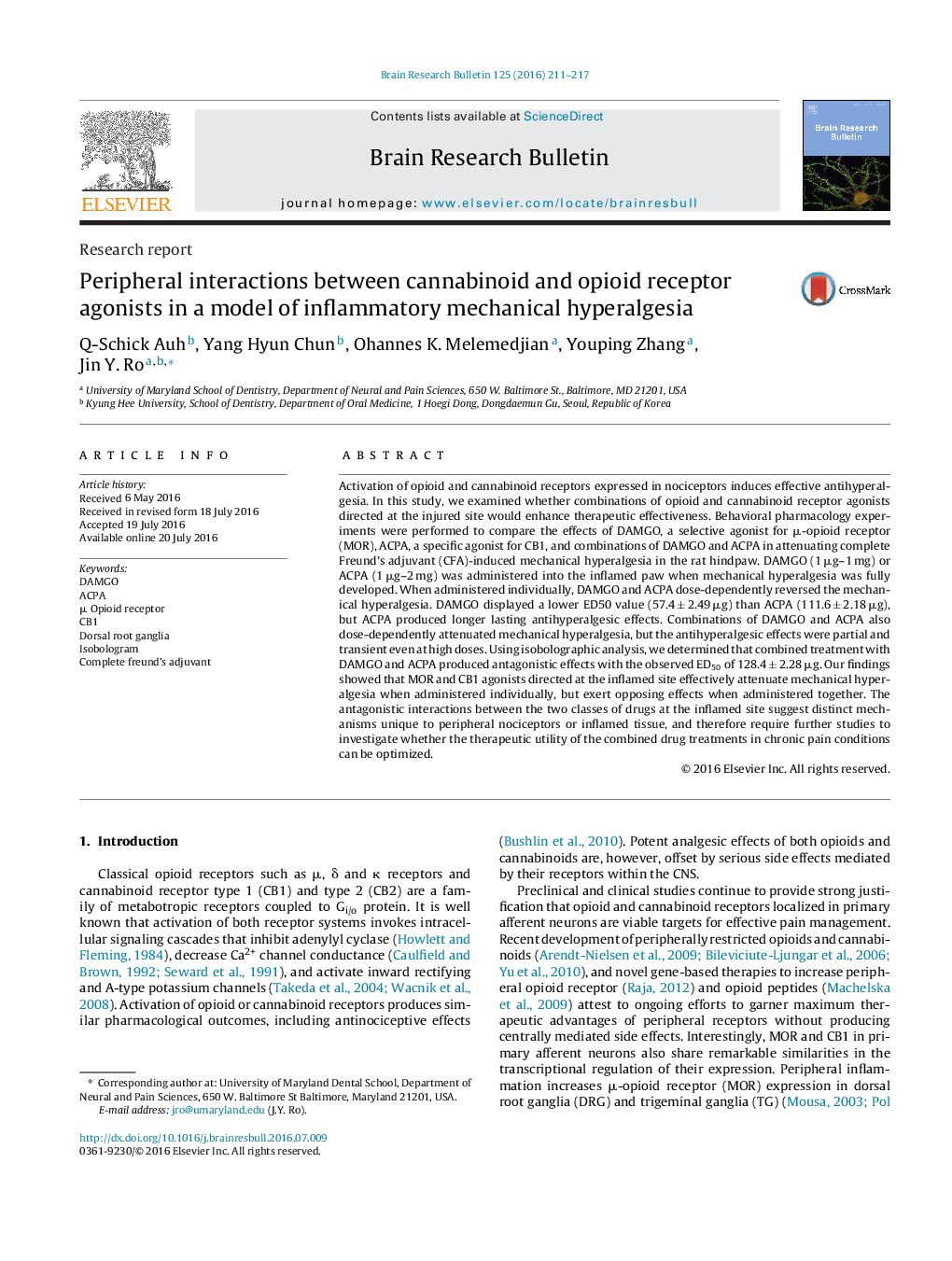| کد مقاله | کد نشریه | سال انتشار | مقاله انگلیسی | نسخه تمام متن |
|---|---|---|---|---|
| 6261553 | 1613231 | 2016 | 7 صفحه PDF | دانلود رایگان |

- Peripheral DAMGO and ACPA effectively attenuate inflammatory mechanical hyperalgesia.
- Peripheral DAMGO and ACPA attenuate inflammatory mechanical hyperalgesia with different pharmacokinetics.
- Combined treatment of peripheral DAMGO and ACPA produces antagonistic effects.
Activation of opioid and cannabinoid receptors expressed in nociceptors induces effective antihyperalgesia. In this study, we examined whether combinations of opioid and cannabinoid receptor agonists directed at the injured site would enhance therapeutic effectiveness. Behavioral pharmacology experiments were performed to compare the effects of DAMGO, a selective agonist for μ-opioid receptor (MOR), ACPA, a specific agonist for CB1, and combinations of DAMGO and ACPA in attenuating complete Freund's adjuvant (CFA)-induced mechanical hyperalgesia in the rat hindpaw. DAMGO (1 μg-1 mg) or ACPA (1 μg-2 mg) was administered into the inflamed paw when mechanical hyperalgesia was fully developed. When administered individually, DAMGO and ACPA dose-dependently reversed the mechanical hyperalgesia. DAMGO displayed a lower ED50 value (57.4 ± 2.49 μg) than ACPA (111.6 ± 2.18 μg), but ACPA produced longer lasting antihyperalgesic effects. Combinations of DAMGO and ACPA also dose-dependently attenuated mechanical hyperalgesia, but the antihyperalgesic effects were partial and transient even at high doses. Using isobolographic analysis, we determined that combined treatment with DAMGO and ACPA produced antagonistic effects with the observed ED50 of 128.4 ± 2.28 μg. Our findings showed that MOR and CB1 agonists directed at the inflamed site effectively attenuate mechanical hyperalgesia when administered individually, but exert opposing effects when administered together. The antagonistic interactions between the two classes of drugs at the inflamed site suggest distinct mechanisms unique to peripheral nociceptors or inflamed tissue, and therefore require further studies to investigate whether the therapeutic utility of the combined drug treatments in chronic pain conditions can be optimized.
Journal: Brain Research Bulletin - Volume 125, July 2016, Pages 211-217